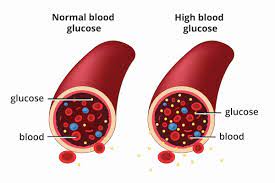Abstract
Background: Type 1 diabetes is one of the most common chronic metabolic diseases in childhood and adolescence[i] and its prevalence is rapidly increasing throughout the world.[ii] The objective of this study is to determine the clinical and socio demographic profile of type1 diabetes mellitus (T1DM). Material and methods: This descriptive cross-sectional study was conducted at Guru Teg Bahadur Hospital, Delhi. A total of 156 diabetic children of aged between 13 to 19 years old diagnosed with T1DM were included in the study. Data was collected via structured questionnaire and medical records of patients attending diabetic clinic at the time of follow up in outpatient department. Adolescents aged group between 13 to 19 years those who were willing to participate selected in the study. After getting an informed consent following data were collected sociodemographic features like age, sex, economic status, family history of parents, details of feeding habits in child hood, existing comorbidities etc. Investigations like HBA1C, cholesterol and triglycerides were obtained. A descriptive analysis was done by SPSS software and results are expressed in percentages, scatter charts, linear charts, column charts and pie charts.Results- Out of 156, majority of adolescents were males 87 (55.77%). The median age of onset of type 1 diabetes was 11 years with a range of (8-13). 113 (72.44%) adolescents were residing in urban area. Majority of them 52 (33.33%) has studied upto middle class, were Hindu 126 (80.77%). Regarding socio economics status, 54 (34.62%) adolescents having a family income between 20,001- 30,000 rs per month followed by 52 (33.33%) rs per month. Polyuria 33 (78.6%) was found to be the commonest symptom followed by polydipsia 27 (64.3%), weight loss 23 (54.8%) and polyphagia13(30.9%).113 (72.44%) were administering insulin through the syringe.106 (67.95%) had positive family history of diabetes. 56 (35.90%) has been hospitalized in last six month , among them 51 (91.07%) got admitted due to diabetes ketoacidosis. Mean Glycosylated hemoglobin (HbA1c) value was 10.3±2.4. On studying the breastfeeding of adolescents out of 156 cases 97 (62.18%) had exclusive breastfeeding till 5th month. 13(8.33%) were having short stature, 18 (11.54%) have abnormal T3, T4 hormone levels. The median body mass index was 18.7(16.3-20.5), weight was 42kg (35-48) and height was 152 cm (142-158). Polyuria, polydipsia and weight loss are the predominant presenting symptoms in these cases.72% had polyphagia, 92% had weight loss, 67 % had a history of fever and 60% presented with diabetic ketoacidosis as presenting symptom.
Conclusion: Polyuria was the most common presenting symptom followed by polydipsia, weight loss and polyphagia. Moreover, most of the children had landed up in diabetic keto-acidosis (DKA) at the time of diagnosis. Therefore, awareness programme should be done in rural community for parents and primary health care workers regarding T1DM for early recognition and prompt treatment.
Keywords: Type 1 diabetes mellitus (DM), diabetic ketoacidosis(DKA),birth weight,
